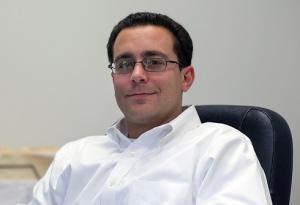Nuclear detectionScanners more rapidly and accurately identify radioactive materials at U.S. borders, events
Among the responses to the 9/11 terrorist attacks, DHS, among other things, has increased screening of cargo coming into the country. At MIT, the terrorist attacks gave rise to a company dedicated to helping DHS — and, ultimately, other governments and organizations worldwide — better detect nuclear and other threats at borders and seaports. Today, Passport — co-founded in 2002 by MIT physics professor emeritus William Bertozzi — has two commercial scanners: the cargo scanner, a facility used at borders and seaports; and a wireless radiation-monitoring system used at, for example, public events.

Rob Matheson // Source: mit.edu
In response to the terrorist attacks of September 11, 2001, the U.S. government founded the Department of Homeland Security (DHS) to prevent terrorist attacks on American soil. Among other things, the DHS increased screening of cargo coming into the country. At the same time at MIT, the terrorist attacks gave rise to a company dedicated to helping DHS — and, ultimately, other governments and organizations worldwide — better detect nuclear and other threats at borders and seaports.
Launched in 2002, Passport Systems developed a scanner, backed by decades of MIT research, that can automatically “fingerprint” radioactive or other suspicious material through a truck, cargo container, or other concealed package, and alert authorities immediately.
Today, Passport — co-founded by MIT physics professor emeritus William Bertozzi — has two commercial scanners: the cargo scanner, a facility used at borders and seaports; and a wireless radiation-monitoring system used at, for example, public events.
Passport’s cargo scanner, called SmartScan, inspects trucks carrying cargo and automatically identifies any radioactive material or “actinides” (radioactive elements) that may signal a dirty bomb, weapon of mass destruction, or explosive. The scanner can also catch contraband such as drugs, tobacco, and firearms. This year, under a contract issued by DHS’s Domestic Nuclear Detection Office, Passport deployed its first SmartScan inspection facility at the Port of Boston’s Conley Container Terminal.
Cargo scanning today relies primarily on high-powered X-rays, which provide a two-dimensional projection of shapes of objects inside containers. Denser objects, which could harbor nuclear threats or contraband, are further investigated by opening the container. Opening and inspecting each suspicious container can take hours and could be dangerous.
Passport’s cargo scanners, on the other hand, offer precision scanning in minutes, without ever opening a container, says Bertozzi, now Passport’s scientific advisor and a member of its board of directors. “In about 30 seconds, we can scan a container and provide a three-dimensional map of [the materials inside the cargo]. This information clears the container or alerts you to a region that needs to be examined more carefully. In another 15 seconds, our scanner will tell you whether there’s an actinide there. In another half a minute, we can tell you what actinide it is, and if it’s a bomb,” he says.
